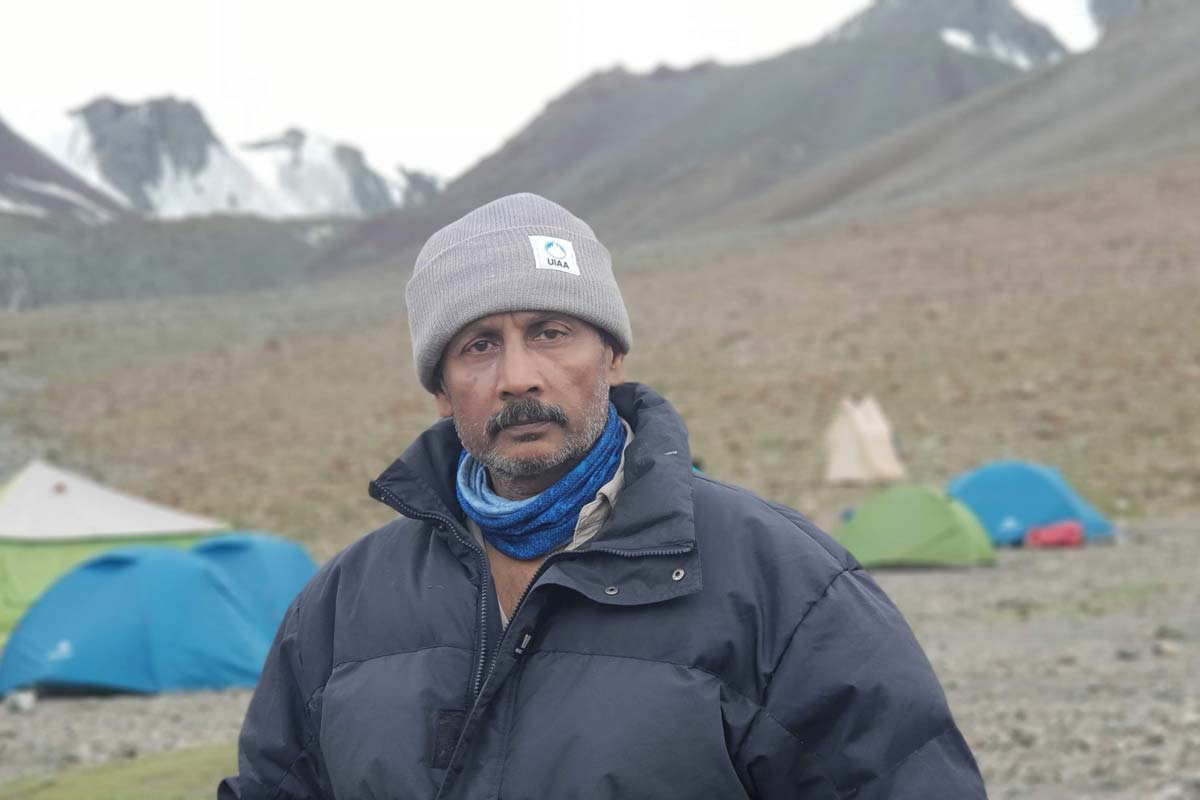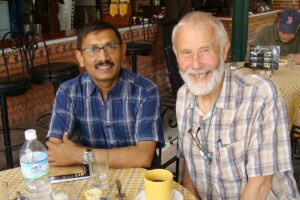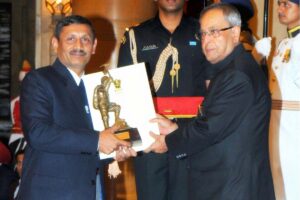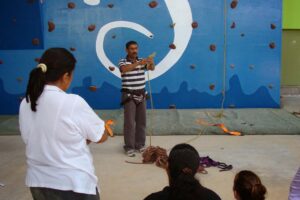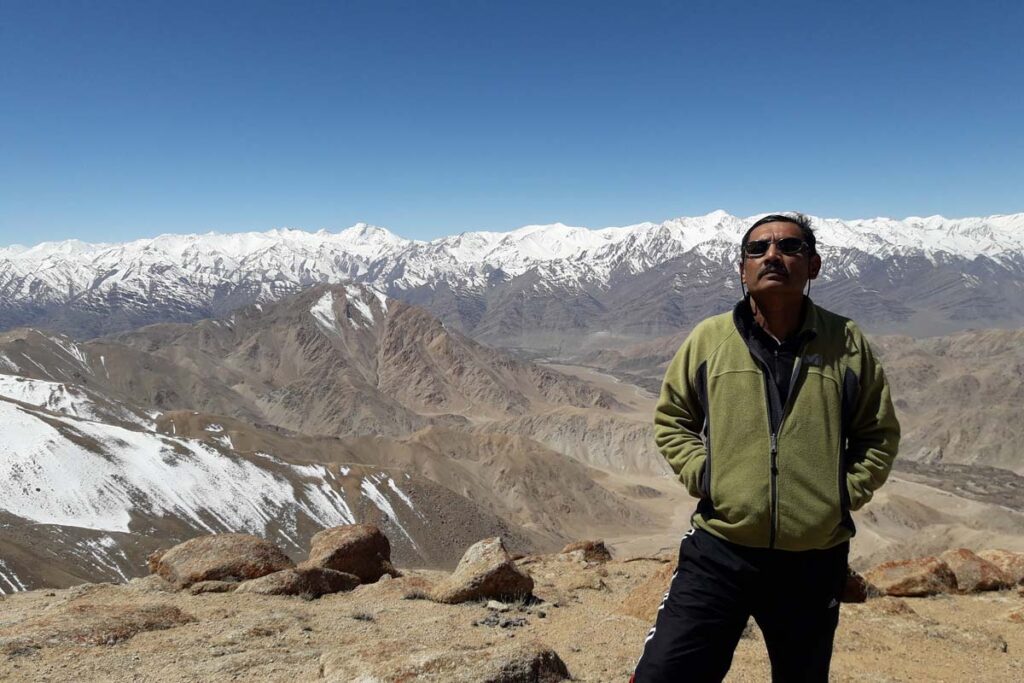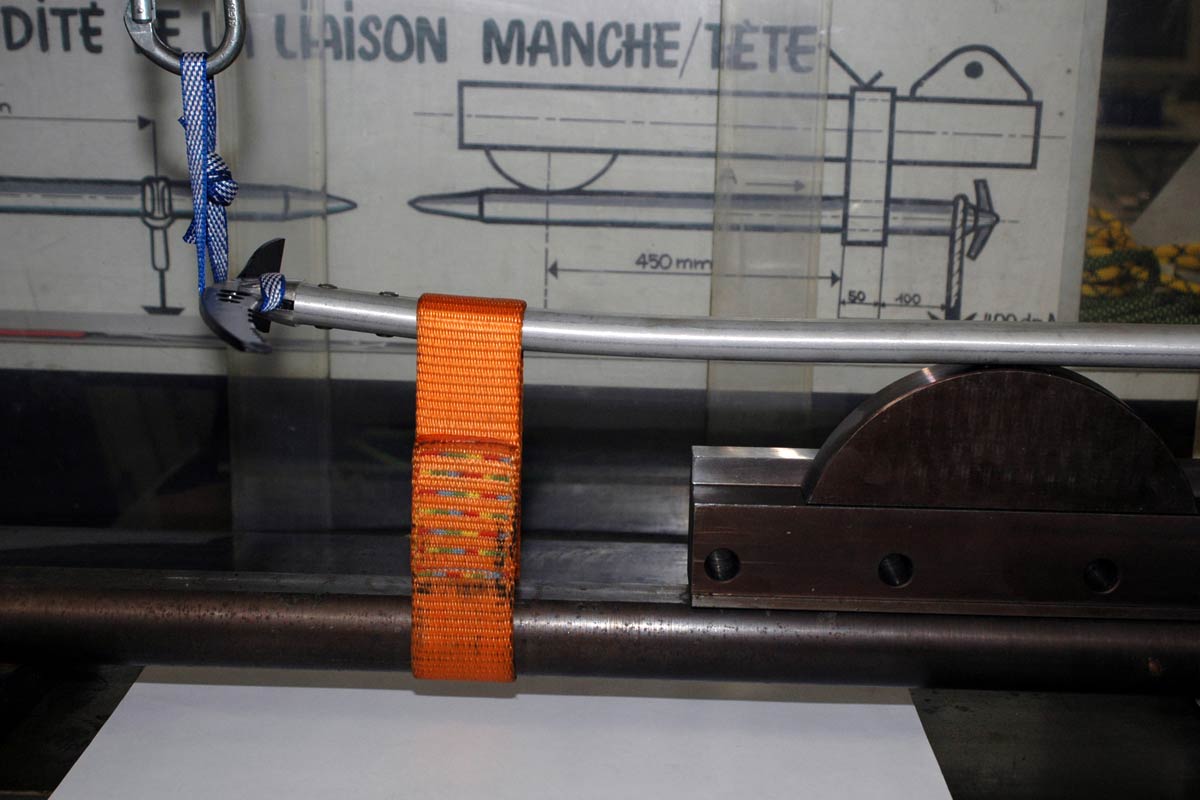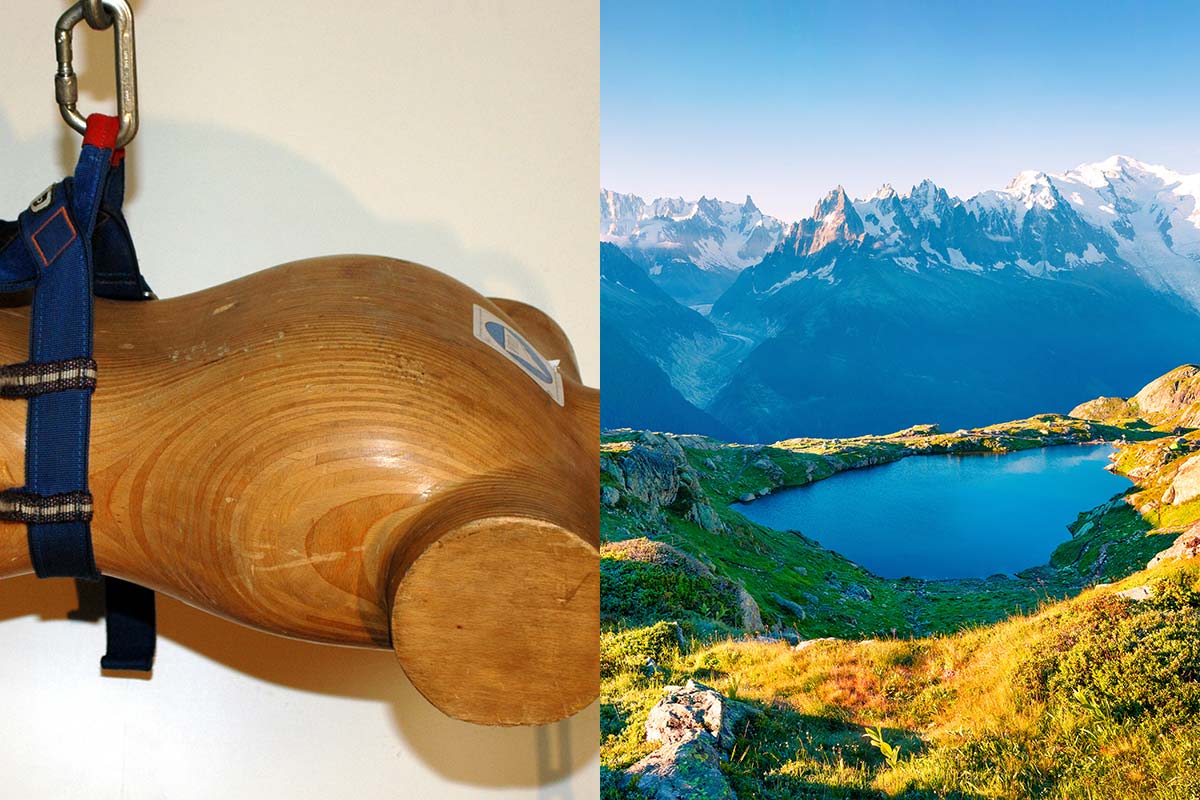Based in Gurgaon, India, a thriving business and technology hub some 19 miles (30km) south west of the capital New Delhi, Amit Chowdhury (Indian Mountaineering Foundation) has a long-standing relationship with the UIAA. He joined the Safety Commission in 2012, later becoming President in 2017. He has served as a Management Committee member, and in 2020 he became the first Indian delegate to be elected to the UIAA Executive Board.
MY PROFESSIONAL LIFE
I served as a commissioned officer in the Indian Air Force (IAF) for 25 years, during which time I worked on a wide range of technical projects related to radar, communications, software and armaments. After taking early retirement from the IAF, I have succeeded in bringing my rich experience of working with cutting-edge technology into the corporate world and getting the best out of people in challenging environments.
I co-founded iZone Education and have consulted with corporate clients for leadership and development for companies such as Microsoft, Vodaphone, Nokia and Oracle among others.
MY LINKS TO CLIMBING
I was seconded from the Indian Air Force to serve as Principal of the Indian Institute of Skiing and Mountaineering (IISM) in Gulmarg for four years, and later served as the Director of the Air Force Adventure Directorate.
I had the privilege of leading multiple mountaineering expeditions to various Himalayan Peaks, including hugely challenging 7000m peaks such as Satopanth and Kamet, as well as the iconic Mount Everest.
Having grown up in Kolkata, the capital of India’s West Bengal State, I pursued my interest in mountaineering by joining the college mountaineering club and spent numerous weekends climbing in the rock outcrops of Bakura and Purulia.
ROLE WITHIN THE INDIAN MOUNTAINEERING FOUNDATION (IMF)
My work with the IMF has involved monitoring and managing mountaineering and hiking expeditions in the Indian Himalayas, with a focus on safety and risk management.
This has involved developing and implementing safety guidelines and protocols, monitoring risks, and coordinating rescue efforts as needed.
Additionally, I have volunteered with the Bureau of Indian Standards’ Sectional Committee for mountaineering gear, providing expertise and input on current practice and user perspectives and a commitment to ensuring the safety and quality of mountaineering gear.
MY PRIOR KNOWLEDGE OF THE UIAA
I knew about the work undertaken by the UIAA Safety Commission. UIAA standards were always a point of reference when buying mountaineering gear. I had knowledge about the various Commissions and had read various papers from MedCom, but had never previously interacted with any of the Commissions.
The UIAA is well known and respected in the mountaineering community in India and throughout Asia, mainly for the UIAA Safety Label on mountaineering hardware.
The work of some of the other Commissions is less widely known and most members of the community are unsure about how the UIAA supports or impacts the climbing community.
JOINING THE SAFETY COMMISSION
My association began with SafeCom back in 2012. I had developed a keen interest in mountain gear when volunteering with the Bureau of Indian Standards when helping to revise some of their standards.
I had also been involved in testing materials in my professional work, so when I learnt about SafeCom, I thought it would be an exciting area of work where I could continue to learn and grow.
MY ACHIEVEMENTS WITH SAFECOM
When I assumed the role of President there was a pressing need for talented members. To address this, I reached out to member federations to sponsor delegates which led to a significant influx of talented individuals.
Additionally, an Asian outreach initiative was launched to include manufacturers and labs from Asian regions, resulting in substantial growth of labs and safety label holders from these areas.
Furthermore, I oversaw the growth of several initiatives such as “Ask SafeCom” programme, which allows users to ask gear and safety related questions, the release of safety videos, the translation of the Safety Label Holder interface to Chinese, and the development of several new standards.
FURTHER DEVELOPMENT IN SAFETY
The UIAA plays a crucial role in promoting and advocating for safe mountaineering practices worldwide.
However, there is always room for improvement in terms of outreach and exposure of its safety initiatives.
One area where the UIAA could improve its outreach efforts is through more targeted and effective communication strategies. For example, the organisation could leverage social media channels of member federations and online platforms in languages other than English in order to reach a wider audience.
The UIAA could also collaborate more closely with national mountaineering federations on campaigns, outreach programmes and events.
Finally, the UIAA could consider developing more user friendly and accessible resources such as online training modules, video tutorials and mobile apps. This would make it easier for people to access and engage with SafeCom regardless of their location or level of experience.
MY ROLE WITH THE EXECUTIVE BOARD
With a deep passion for mountaineering, I wanted to contribute to the development and promotion of the sport.
Being a member of the UIAA Executive Board allows me to play an active role in shaping the direction of the organisation and the sport as a whole. I wanted to make a difference in the mountaineering community and felt that being a member of the UIAA Executive Board would provide me with the platform to effect meaningful change.
Furthermore, I felt a sense of duty to give back to the mountaineering community and contribute to the sport that has given me so much joy and fulfilment over the years.
So far, in my role as Chair of the Commissions Working Group within the Executive Board my responsibility has been to analyse the working of all commissions and recommend their restructuring to ensure their alignment with the strategic goals of the UIAA.
The Management Committee has approved the creation of two new Commissions, and task descriptions have been developed to provide direction to the Commissions. Going forward, I will prioritise providing support to the SafeCom, Training and Mountaineering Commissions.
Overall, my motivation for standing for election is a combination of personal and professional factors, driven by my love for mountaineering and my desire to make a difference in the community.
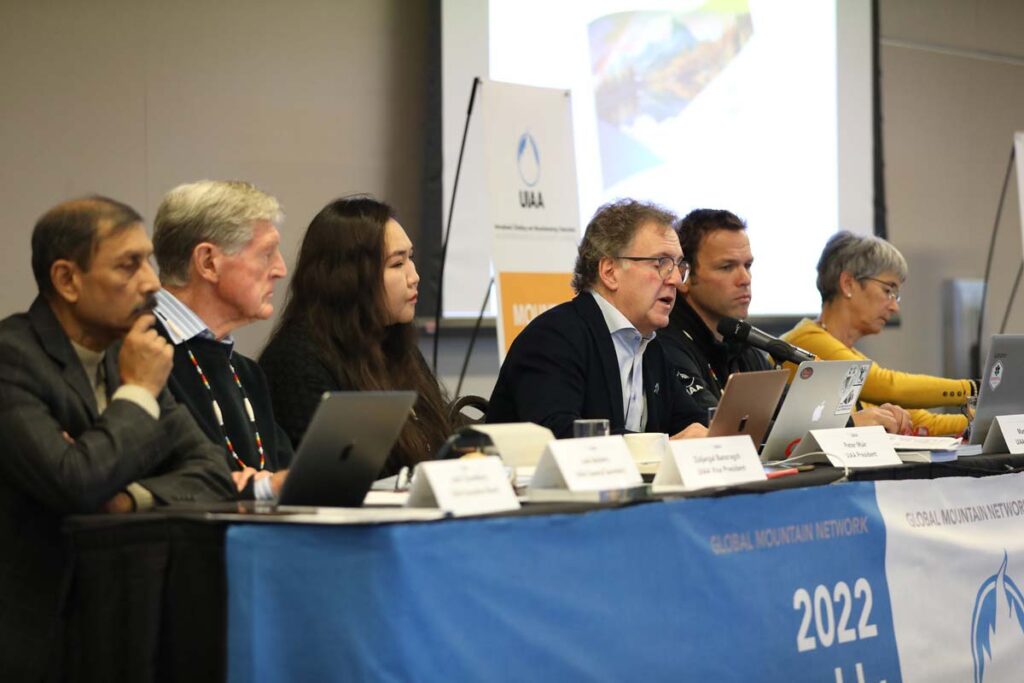
FUTURE PRIORITIES
The teamwork and alignment within the Executive Board and the UIAA office is absolutely phenomenal. The current Executive Board has already helped bring in positive changes in communication within the Management Committee- Commissions – Executive Board – Office quadrilateral.
In coming years, I hope to see shorter communications – action loop between this and member federations, thereby making the UIAA much more efficient in meeting the needs of the community.
Going forward, the main priorities to my mind are to ensure meaningful and relevant projects are undertaken and completed within a reasonable timeframe. Of the three-pillar structure, the sport and sustainability pillars are I feel challenges that are being addressed very efficiently and will require a lot of effort and time.
For example. both the Ice Climbing and the Climate Change Working Groups have plenty of hard work ahead.
MY OWN CLIMBING PASSIONS
The Himalaya is my favourite mountain range. I have primarily been engaged in Himalayan style expeditions, which entail employing siege tactics such as embarking on a lengthy approach march to a base, pioneering a route up the mountain, establishing higher camps and fixed lines, stocking the camps and then making a summit push from a high camp.
This approach requires spending upwards of three weeks on the mountain. However, as the demands of age and family and career responsibilities have grown, it has been increasingly challenging to continue this style of climbing.
I have come to prefer Himalayan hikes which, while tough physically, are less demanding on time.
OTHER ARTICLES IN SERIES
#1 – Klara Dvorakova (Czech Republic)
#2 – Lionel Kiener (Switzerland)
#3 – Pierre Humblet (Belgium)
#4 – Nikolay Primerov (Russia/Switzerland)
#5 – Buddha Basynat (Nepal)
#6 – Harshwanti Bisht (India)
#7 – Juan Jesús Ibañez Martin (Spain)
#8 – Mrika Nikҫi (Kosovo/Albania)
#9 – Greg Moseley (South Africa)
#10 – Stephen Gladieux (United States)
#11 – Joop Spijker (Netherlands)
#12 – Marija Andjelkovic (Serbia)|
#13 – Gergo Santha (Hungary)
All photos, except where identified, courtesy of Amit Chowdhury

